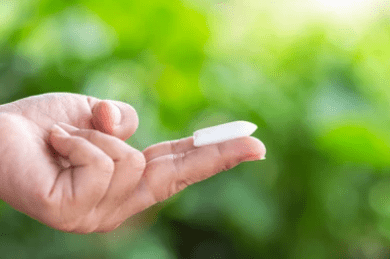Suppositories are solid dosage forms of a medicament for insertion into body cavities other than the mouth. They may be inserted into the rectum, vagina, or nasal cavity. Suppositories are available in different shapes, sizes, and weights. Suppositories are used to produce local, systemic, and mechanical action. Suppository Bases: These are used to prepare suppositories to retain their shape and firmness during storage and administration.
Table of Contents
Classification of Suppository Bases:
1. Fatty Bases:
a) Theobroma Oil: It’s a yellowish-white solid obtained from crushed and roasted seeds of theobroma cocca. It’s also known as cocoa butter, It melts at body temp and releases the medicament for rapid absorption. It’s considered the most suitable base for rectal suppositories. It readily liquifies on warming and quickly settles on cooling.
Disadvantages:
- It shows the phenomenon of polymorphism.
- It becomes rancid and melts in warm weather.
- It has a tendency to stick to the sides of the mold when solidified.
- The leakage from the body cavity on melting can take place.
- It’s expensive
- It’s immiscible with body fluids.
(b) Emulsifeid theobroma oil: This may be used as a base when large quantities of aqueous solutions are to be incorporated.
(c) Hydrogenated Oils: These are obtained by hydrogenation of various vegetable oils such as aractis oil, cotton seed oil, coconut oil, palm oil. It’s used as a substitute for theobroma oil because it has a number of advantages our theobroma oil. These are:
- They are resistant to oxidation Lubrication of the mould is not required.
- They produce colorless, odorless, and elegant suppositories.
- The emulsifying and water-absorbing capacities are good.
2. Water Soluble and water-miscible bases:
a) Glycero-gelatin base: It’s a mixture of glycerin and water which is made stiff by the addition of gelatin. The base may be used for preparing all types of suppositories but it’s particularly used for making pessaries. The suppositories prepared from glycerogelatin base are translucent and tend to dissolve or disperse slowly in the body can’t relase the medicament.
b) Soap Glycerine suppositories: In the glycerogelatin base, the gelatin is replaced with either curd soap or sodium stearate.
c) Polyethylene glycols: These polymers are known as carbowaxes or polyglycerols or macrogols, having molecular weights less than 1000 are liquids and higher than 1000 are wax-like solids.
3. Emulsifying bases:
These are synthetic bases.
a) Witepsol: They consist of triglycerides of saturated vegetable acid with a percentage of partial esters. The Suppositories prepared with witepsol should not be cooled. The mold should be lubricated.
b) Massa estarinum: It’s a mixture of mono, di, and triglycerides having formula C11 H23 COON also known as adeps solidus. It’s white, brittle, odorless, and tasteless.
c) Massuppol: It consists of glyceryl esters mainly the lauric acid small amount of glyceryl monostearate.
Advantages over theobroma oil:
- They solidify rapidly
- They are non-irritant
- Lubrication of mould is not required.
- Overheating doesn’t affect the physical properties of the base.
Displacement value
Displacement value is defined as the quantity of the drug which displaces one part of the base. The volume of suppository from a particular mould is uniform but its weight will vary. To prepare the suppositories of uniform and accurate weight, allowance must be made for the change in density of the mass due to added medicaments. For this purpose, the displacement value of medicament is taken into consideration.
Pessaries are meant for introduction into the vagina. They are longer than rectal suppositories and weigh about 4-8 gms. They are conical, wedge, (or) rod-shaped. Pessaries are available as vaginal tablets and vaginal capsules. They are prepared by various types of suppository bases used. They have an original shape at room temperature, when it is insertion into the vagina (or) cavity, they melt by body temperature. They are prepared by molding (or) compression method. Eg: Lactic acid pessaries, Nystatin pessaries
